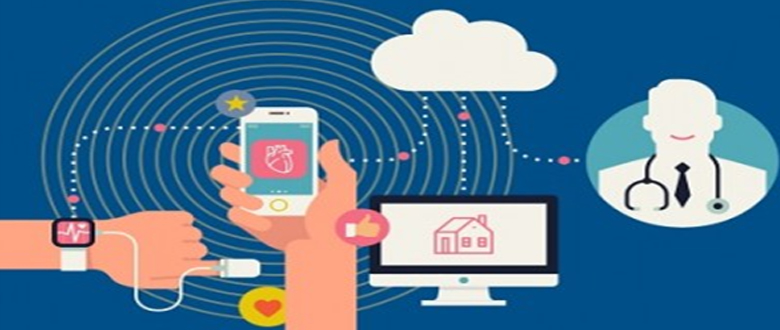The world is continuously growing and changing. Various advancements have also occurred when it comes to the technology used in rendering healthcare services. The technology has also played a big role in patient registration and data monitoring. Now there are technologies that allow a healthcare provider to monitor their patients in their own mobile phones.Internet of Things could be the driver for health care’s new visage and revolutionize patient care transcendentally.
They are also now capable of sending and receiving patient’s information in their mobile phones and provide brisk alerts at the health threshold alert points. Devices that can help monitor one’s fitness,health and vitals are easily available in the market. As a matter of fact, there are even sensors that are capable of collecting data that would of course help the doctor to be informed in case it exceeds the breakeven point during an aberration case. This extended offering deems to have parity with all stakeholders like hospitals, ICU, ambulatory other than patient and doctor. This allows them to provide the right medication and treatment to their patients fast. On the other hand, although great improvements have been made in the healthcare industry, one can still expect that a brighter future awaits in the next years or decades.Within five years, the majority of clinically relevant data will be collected outside of clinical settings.
It has been said that healthcare in the future would become more personal offering. Thus, one can expect that personalized medicines or medicines that have been created specifically for an individual would be available. The way doctors diagnose their patient’s disease and provide treatment to them would be largely based on IoT paradigm. In the IoT paradigm everything in the world will be smart, allowing them to communicate with each other through internet technology either physically or virtually. IoT allows people and things to be connected Anytime, Anyplace, with anything and anyone, ideally in any path/network and any service.Following are few applications of IoT in healthcare industry.
1) Remote patient monitoring
Remote patient monitoring (RPM) uses digital technologies to collect medical and other forms of health data from one individual in one location and electronically transmit this information to the health care providers. RPM can help reduce the number of hospital readmissions and lengths of stay in the hospitals.
2) Clinical care
Hospitalized patients whose physiological status requires close attention can be constantly monitored using IoT driven, non-invasive monitoring. Sensors are used to collect such information and using cloud this data is analyzed and sent to caregivers. It replaces the need for the doctor to visit the patient over regular intervals for checkup. This will also help to improve the quality of care through constant monitoring.
3) Device monitoring
An IoT connected metal device can notify when there is a problem with a device. This will prevent the device from shutting down and avoid patient rescheduling.
4) Outpatient Monitoring
This IoT solution enables doctors to capture health parameters and advice patients remotely. The patient’s hospital visit is therefore limited to visit only on need basis. This solution helps hospitals manage hospital beds and consequently increase revenues while at the same time delighting customers.
The Howard case below highlights the key role of a business model in ensuring the competitive advantage and sustained success of a business venture. It appreciates the market attractiveness and future of wearable technology.
GOQii’s product-service offering of wearable fitness band technology was supplemented with remote personalized coaching. With its launch in the Indian market, and its emergence as a pioneer of a new category of product in the health and lifestyle space had the ability to integrate human assistance with built-in artificial intelligence. Gondal realized that while people were adopting wearable technology solutions for healthy living, there was still a lack of awareness and an air of hesitancy about the usefulness of and need for wearable devices in India. Gondal’s dilemma: whether to continue GOQii’s positioning as “wearable technology with personalized coaching” and aggressively expand globally, or consolidate and broaden his present offering by embracing the customer more fully and focusing on the “customer healthcare journey” in India. Case B picks up from October 2016, by which time GOQii had consolidated and broadened its offering by focusing on the “customer journey” in India. It had successfully on-boarded different service providers such as doctors, a diagnostic center chain, a hospital chain, sports and grocery stores and Axis Bank (for payments) on their platform, thus providing a complete health ecosystem to the GOQii user. By the second quarter of 2016, GOQii had achieved the number one spot in the Indian wearables market. The immediate decision that GOQii core team need to make is whether they should tie up with multiple insurance providers or explore the possibility of partnering with a reinsurer to complete the entire health spectrum services offering on their data platform.
Shweta Nanda
Assistant Professor – Technology & Operations


